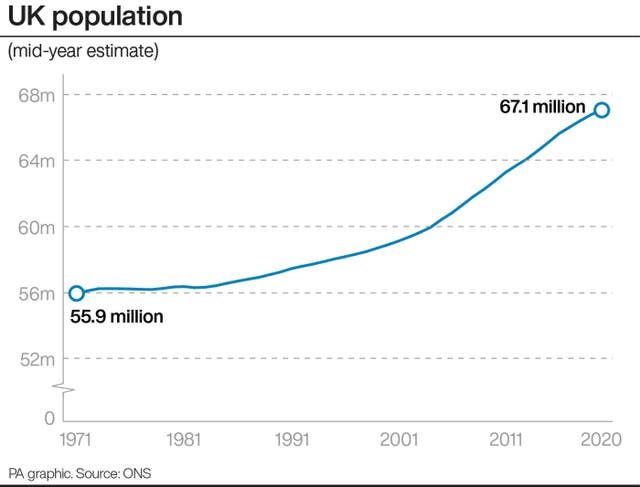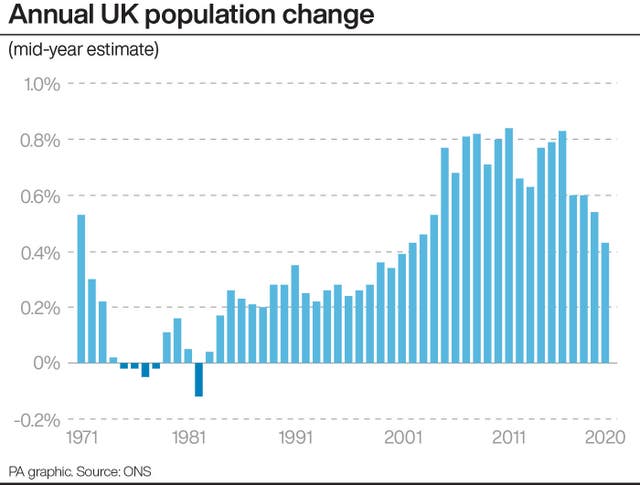Covid-19 pandemic sees slowest UK population growth since 2001
The year to mid-2020 saw the highest number of deaths in the UK since the year to mid-1986.

The UK population grew by an estimated 0.4% in the 12 months to June 2020, the lowest annual increase for nearly two decades, reflecting the impact of the first wave of the coronavirus pandemic.
A total of 67.1 million people are likely to have been living in the UK in the middle of last year, up from an estimated 66.8 million in mid-2019.
The year-on-year rise of around 284,000 is the smallest since the 12 months to mid-2001.

The figures, from the Office for National Statistics (ONS), show the year to mid-2020 saw the highest number of deaths in the UK since the year to mid-1986.
The first wave of Covid-19, which began in the UK in March of last year, accounted for more than 55,000 of these deaths.
Covid-19 also had an impact on migration within the country, with an estimated 11% fewer internal moves than in the previous year.
This is likely to reflect the lockdown introduced across the UK at the end of March, which imposed severe restrictions on people being able to move home.

Neil Park, of the ONS population estimates unit, said: “The 12 months to June 2020 can be broken into two clear parts: the first eight months, when births, deaths and migration patterns were similar to trends seen in recent years; and the four months from March, when the first wave of coronavirus hit.
“Some of the clearest impacts of the pandemic can be seen in the increase in the number of deaths and reduction in the number of moves made within the UK.”
There were a total of 700,700 births in the UK in year to mid-2020, the ONS said – the fewest in any year since 2003 – while the number of deaths in the same period was 669,200.
Natural change in the population – the difference between the number of births and deaths – was around 31,000: the lowest for at least 38 years and “largely the result of the increase in deaths”.
An estimated 622,000 people immigrated to the UK, while 375,000 emigrated and moved to other countries, meaning there was net international migration across the 12 months of 247,000.
This can be split into two distinct phases, the ONS said: “relatively” high levels of net inward migration up to March 2020, then a small net outflow once the pandemic began.
The overall slowing of the UK’s population growth rate in the year to mid-2020 is “largely from the impact of the coronavirus pandemic on mortality”, however.
At a national level, population growth slowed almost to a standstill in Scotland (0.05%, compared with 0.46% growth in the year to mid-2019) with a similarly low rate in Northern Ireland (0.10%, down from 0.64%).
England saw population growth fall from 0.55% to 0.47%.
Only Wales saw its growth rate increase, from 0.45% to 0.53%, reflecting higher net migration from other countries and different parts of the UK.
At a local level, just over three quarters of areas saw their population grow in the year to mid-2020.
The five areas with the highest estimated rates of population growth were all in London: City of London (up 12.5%), Camden (3.5%) Westminster (3.3%), Islington (2.3%) and Tower Hamlets (2.2%).
Those with the greatest decrease in population were the London borough of Lambeth (down 1.3%), West Suffolk (down 1.0%), Worcester (down 1.0%), Inverclyde (down 1.0%) and Reading (down 0.9%).





